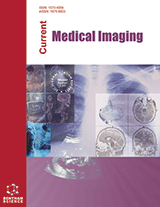
Abstract
Background: Magnetic resonance enteroclysis (MRE) has been widely applied to diagnose Crohn’s disease (CD). Magnetic resonance (MR) at 3.0 T improves signal-to-noise ratio (SNR), shortens image acquisition time, and shows more advantages.
Objective: This study aimed to retrospectively analyze the diagnostic value of 3.0 T MR imaging for active CD.
Methods: 48 CD patients hospitalized in our hospital from January 2021 to December 2022 were selected as the study subjects. These 48 CD patients underwent both double-balloon enteroscopy and 3.0 T MRE. All patients' arterial phase signal, venous phase signal, bowel wall, and bowel lumen of MRE were observed to identify whether they suffered from active CD. Based on the results of enteroscopy, the number of true positives, true negatives, false negatives, and false positives diagnosed by MRE were screened; next, the diagnostic accuracy, sensitivity, and specificity of MRE in assessing active CD were calculated.
Results: Of the 48 patients, 39 were diagnosed with small bowel CD by MRE, which was not significantly different from the results of enteroscopy (P>0.05). According to MRE diagnostic results, the arterial phase predominantly presented high signal intensity, and the venous phase mainly presented low signal intensity or isointensity. Small bowel CD lesions were primarily characterized by bowel wall thickening, rare pneumatosis enhancement of the bowel wall, bowel lumen pneumatosis or dilatation, and rare strictures. Besides, MRE presented an accuracy of 93.75%, sensitivity of 97.37%, and specificity of 80.00% in diagnosing CD.
Conclusion: 3.0 T MR imaging has diagnostic value for active CD and shows certain clinical application value.
Keywords: Crohn’s disease (CD), 3.0 T magnetic resonance (MR) imaging, Diagnostic value, Active stage, Clinical application, Efficacy.
 16
16











